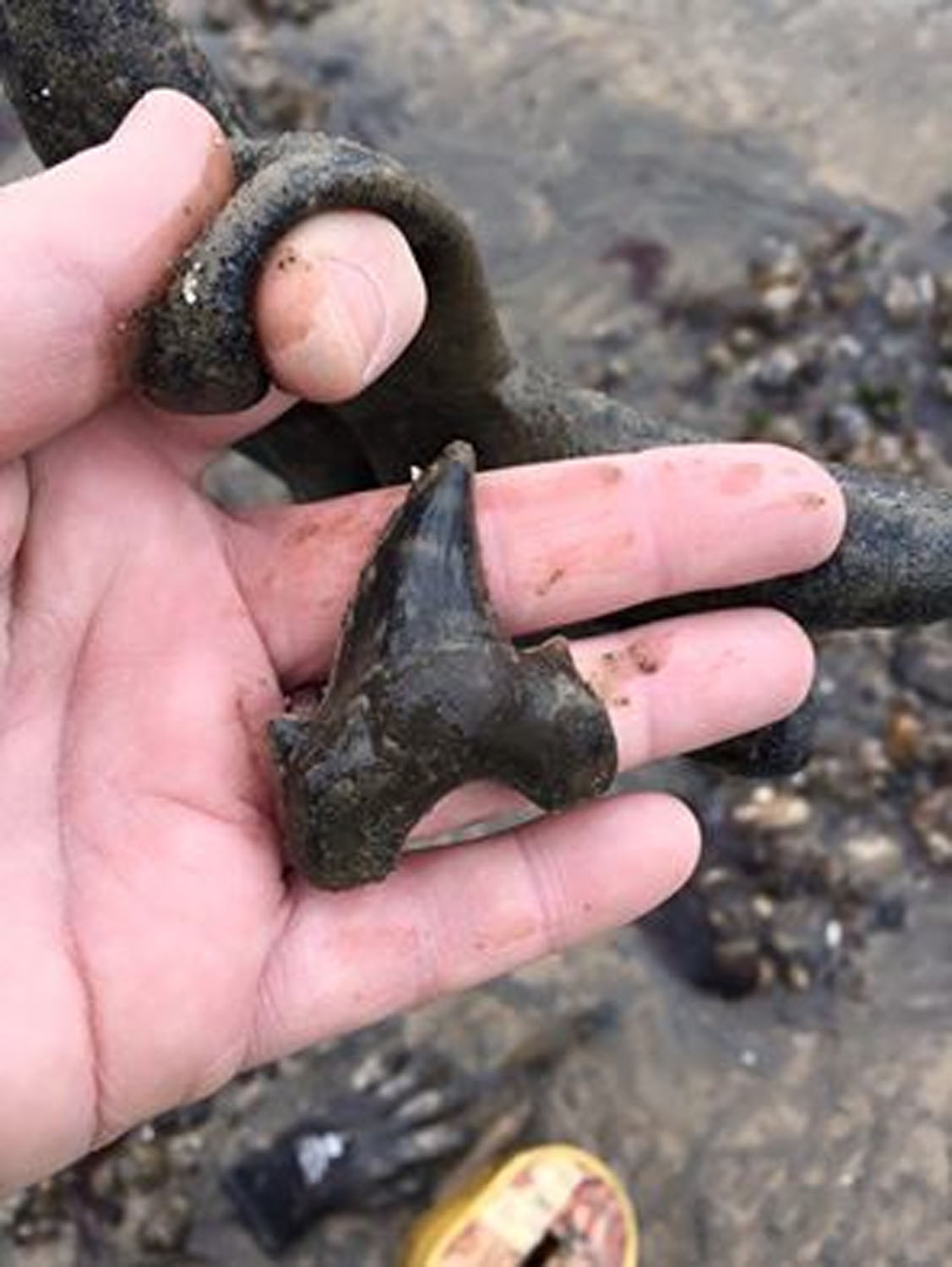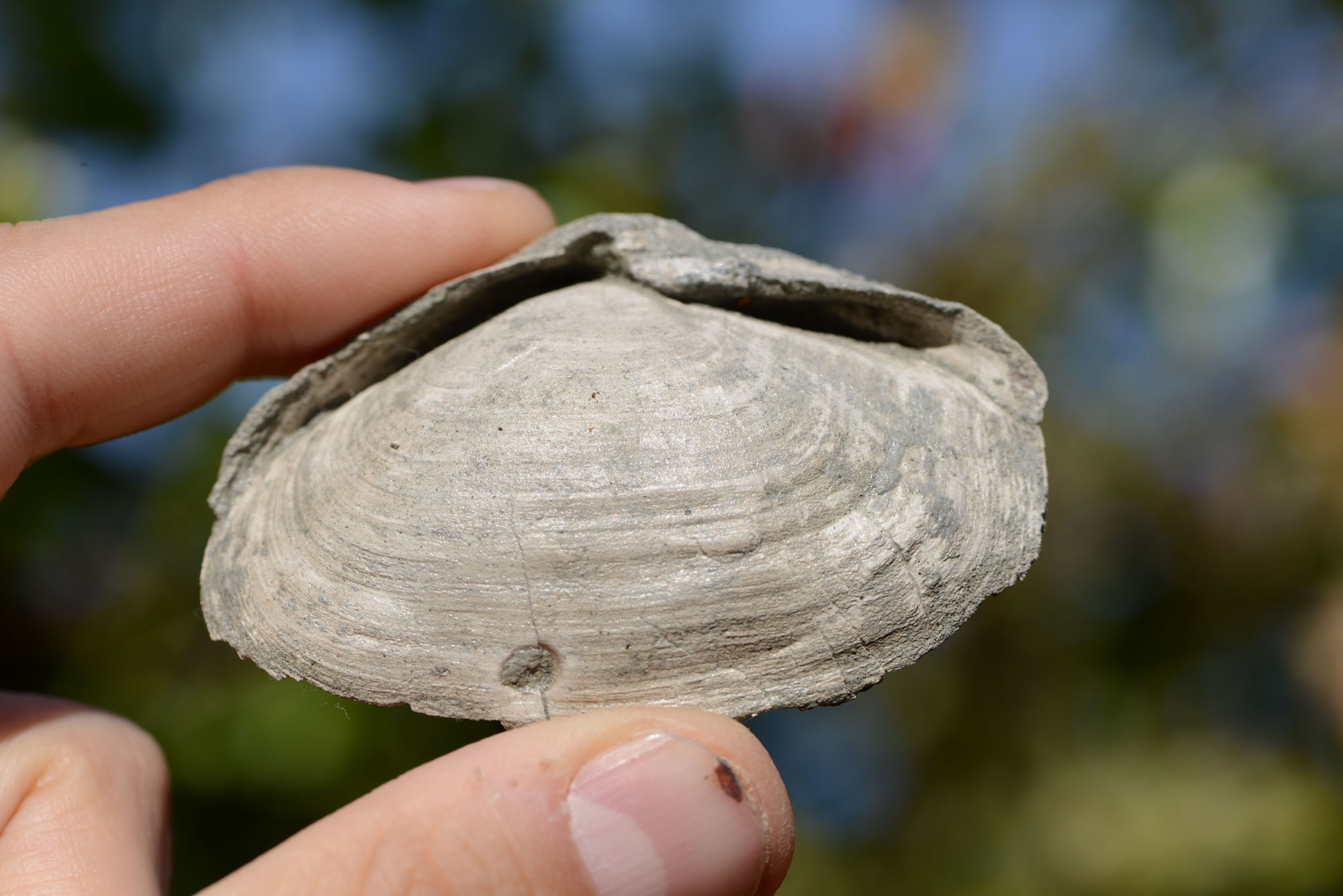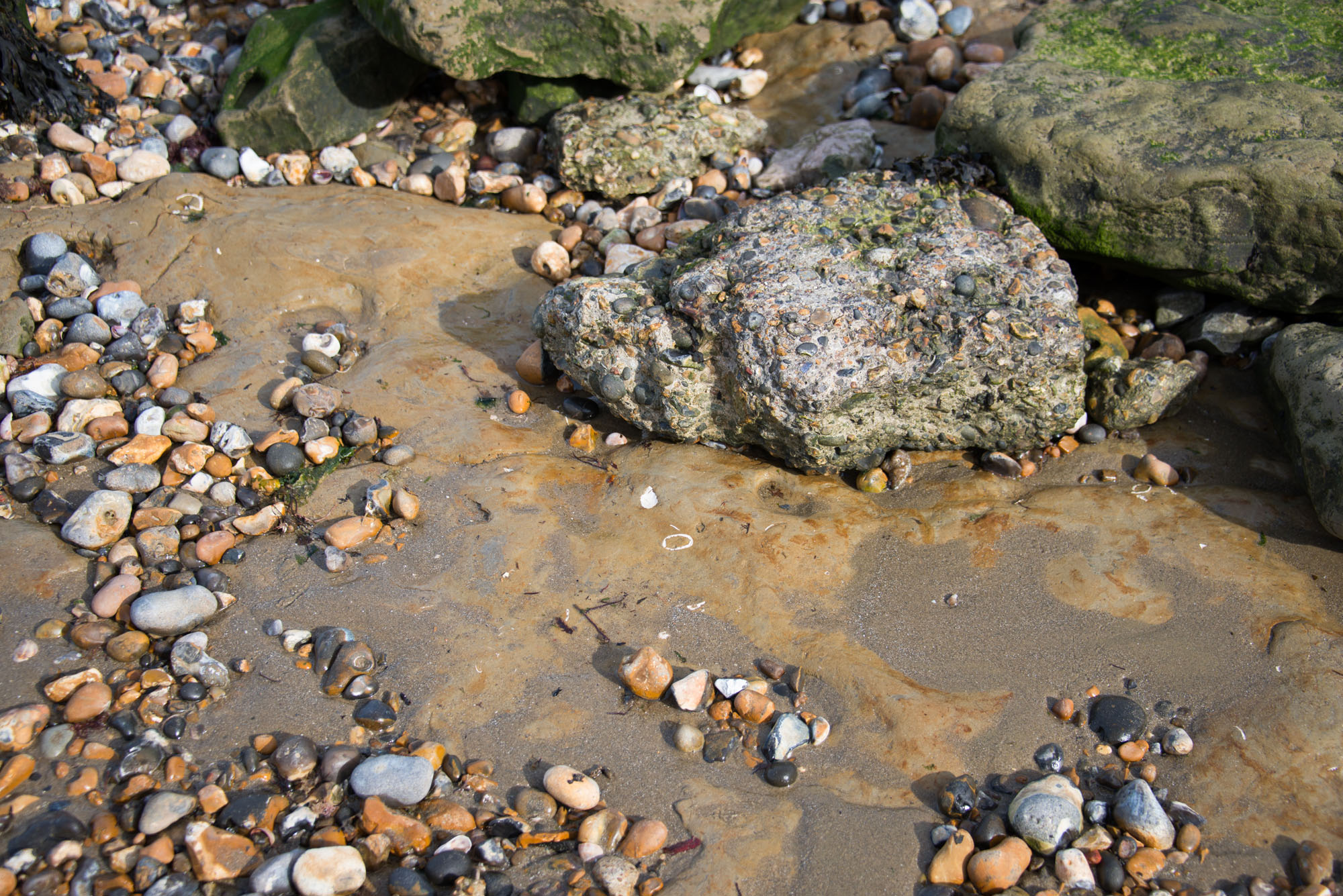The east of Herne Bay marks a dramatic change from rich fossil-bearing Eocene clays to the sandy cliffs of Reculver. Although sharks’ teeth do occur in the Thanet Sands, this location is mainly for those interested in collecting bivalves. These are found within foreshore exposures and the shell beds exposed within the cliff.
DIRECTIONS
♦ If coming from the west of Herne Bay, follow the A299 to Herne Bay and go past the Beltinge exit. At the next exit, take the road to Reculver and Hillborough, which goes under a road bridge. After the bridge, take an immediate left and turn right at the next junction.
♦ Follow this road all the way to Reculver. There is a large car park with parking here. From the car park, walk along the promenade.
♦ There is no access from the end of the sea wall. Instead, climb the steps up the embankment and then follow the footpath towards the cliff, but behind the sea wall. Access to the beach is by a slipway cut through the end of the cliff.
♦ Ref: 51.37863°N, 1.19135°E
PROFILE INFO
FIND FREQUENCY: ♦♦♦ – For any bivalve collector, this is an important site. You can easily come back with several different species, but be aware that these shells are extremely fragile and will break very easily. You will need to collect the shells in situ, still within blocks of sandy matrix and then treat at home with PVA or similar solution to harden, before removing the surrounding matrix.
CHILDREN: ♦♦♦♦ – This location is suitable for children, although they should keep well away from the cliffs, which can crumble at any time. Be aware that the tide comes in very quickly and reaches the base of the cliffs.
ACCESS: ♦♦♦♦ – There is good access with a large car park and toilets (including a ‘toddler and parent toilet’). There are also nearby visitor attractions, such as the remains of St Mary’s Church, a country park and a Roman fort.
TYPE: – Bivalves can be found within the shell beds exposed in the cliff and exposed as a foreshore platform. You will find the foreshore areas much easier to collect from, as the shells easily break up and we never recommend digging into cliff faces. Use a trowel to dig up a lump of sandy matrix surrounding a fossil shell from the foreshore, rather than trying to remove it completely. If you do try, it will break. Wait until you get home before extracting the fossils.
FOSSIL HUNTING
The Thanet Beds yield sharks’ teeth and bivalves. Sharks’ teeth are much less common than other similar locations and, if you are mostly interested in finding these, we would not recommend this site. Instead, just a mile down the road towards Herne Bay is Beltinge, which is extremely rich in sharks’ teeth.

Reculver is of interest to mollusc collectors, due to the large number of bivalve species that can be found here. As soon as you walk down the slipway, which cuts through the end of the cliff, shell beds clearly become visible. However, trying to get complete shells out of these is almost impossible. Instead, your focus should be on the foreshore deposits, which remain wet, harder and easier to extract fossils from.
If you try to remove whole shells, they will break. Instead, using a trowel or knife, scoop up a lump of sand from around the shell, lifting it within the surrounding matrix. By leaving the shell in the sandy matrix, it will survive the journey home. As soon as you get home and before the sand has a chance to dry out, brush on a PVA solution (three parts water to one part PVA), or suitable alternative, to harden the shell. After repeating this several times, you can gradually remove the matrix. The shell should then be quite stable.

GEOLOGY
The sandy cliffs and foreshore deposits here are from the Thanet Beds of the Paleocene. Most of the cliff consists of sand without any shells but a series of shell beds is present, which become thicker to the east, as the older beds are exposed. These are particularly visible when you first enter the beach. Shell beds on the foreshore are from the same Thanet Beds and are easier to collect from. These are mostly exposed to the east, where the lowest beds of the Thanet Sands can be seen. These sands were deposited in a low-energy coastal marine environment. There are numerous large, flat bodies of hardened sand poking out from the cliff face, known locally as ‘doggers’. Where the cliffs have been eroded by the sea, these concretions are also found scattered on the foreshore.
Further up the cliffs are beds of Eocene (Ypresian) age, consisting of layers of the Upnor Formation (glauconitic fine to coarse-grained sand, with variable clay and silt content). These younger sediments represent a shallowing-upwards sequence in the cliff section, indicating a shoreline that became progressively closer. The junction between the Thanet Formation and the Upnor Formation on the north Kent coast is indistinct and difficult to identify in the field.
Above the Upnor Formation lies the Harwich Formation (displayed as glauconitic silty or sandy clays, silts and fine to coarse-grained glauconitic sands) with a basal bed comprising numerous rounded black pebbles of flint within a matrix of sand and silt.
At the top of the section rests the London Clay Formation. On a fresh exposure, the clay may appear grey-blue in colour but after contact with oxygen in the atmosphere, it turns a chocolate-brown. During these times the coarser land-derived sediment continued to be deposited close to the coastal margin, which now lay far to the west, while only the very fine-grade clay material was washed out to the deeper seas, as seen in the cliffs at this location.


SAFETY
Common sense when collecting at all locations should be used and prior knowledge of tide times is essential. It is very easy to get cut off by the tide, which often reaches the base of the cliffs. Also, be aware that the tide comes in very quickly.
EQUIPMENT
A trowel is very handy here, as well as plenty of tissue paper and Tupperware boxes to carry the shells. As the bivalves are very fragile, you will need a trowel to dig around the shell. A small knife will also be handy for extracting smaller bivalves.
ACCESS RIGHTS
This site is a site of special scientific interest (SSSI). This means you can visit the site, but hammering the bedrock is not permitted. For full information about the reasons for the status of the site and restrictions, download the PDF from Natural England.
It is important to follow our ‘Code of Conduct’ when collecting fossils or visiting any site. Please also read our ‘Terms and Conditions‘
LINKS
♦ Buy Fossils, Crystals, Tools
♦ Location Discussions
♦ Deposits Magazine
♦ Join Fossil Hunts
♦ UK Fossils Network



























